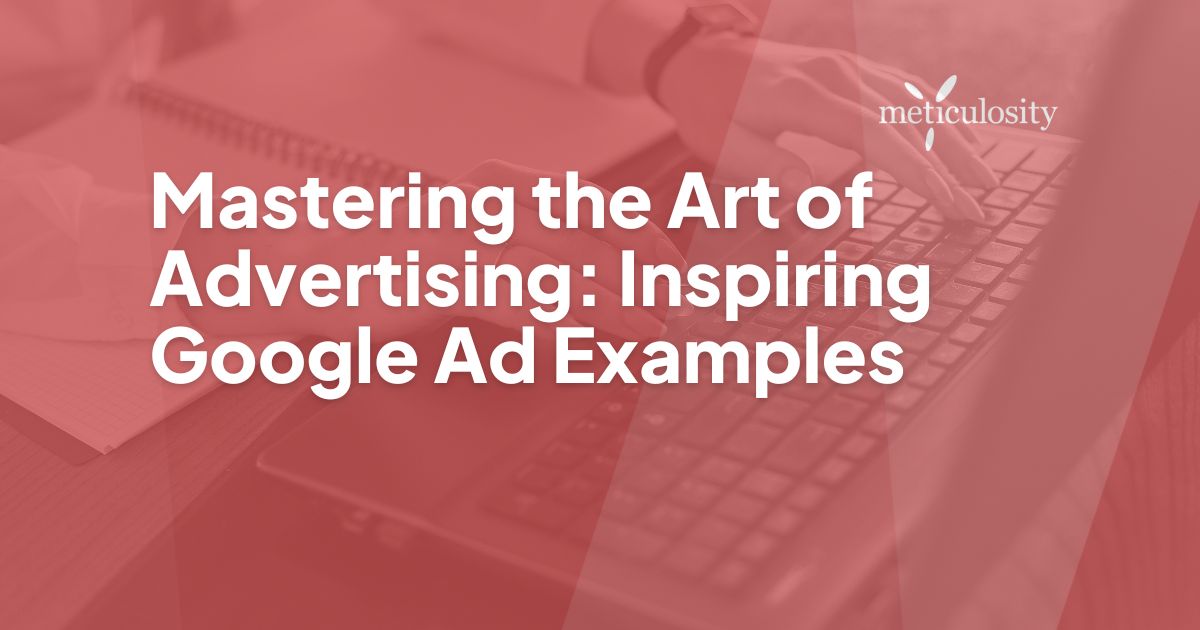Nailing the art of Google Ads can be as challenging as finding a needle in the haystack. But worry not, after rolling up my sleeves and diving into an ocean of data – precisely $38-billion worth of ads – I've managed to piece together a list of strategies that have proven their mettle time and again.
This post aims to navigate you through various types of Google Ads, illustrate with relatable campaign examples, and spill some secrets on creating compelling advertisements. So if you're yearning for your ads to soar high above the rest, let's make a giant leap together!
Types of Google Ads
Two-factor authentication requires users to provide two different forms of identification to access your Magento admin panel. As a result, 2FA makes it more difficult for unauthorized users to gain access, even if they manage to obtain your password. It is also worth noting that 2FA is a requirement for PCI-DSS which many payment processors require you to implement.
Search Ads
Search ads are a big deal on Google. They show up when you type words into the search bar. These are the ads that match your words. Do you want to buy shoes? Type "shoes" and see shoe ads appear! This is because businesses pick out certain keywords for their ads.
Their ad will then show up for those keywords. A cool thing about these ads is they can change based on what you type in. This kind of ad, called a responsive search ad, has many titles and details that change to fit your search better.
So if you're selling something, try using search ads to reach people looking for what you offer.
Display Ads
Display ads are a great tool for any business. These visual ads catch the eye and help people learn about your brand or product. They come in many types, like static picture ads, moving picture ads, video ads, and responsive ads.
You can choose what works best for your brand.
These display ads give you the power to reach a certain type of person with your ad. You do this by using details like age group or interests of the people who watch them. Google also helps you make suitable display ads that work well for selling your stuff online.
This includes tips on making pretty pictures, writing easy-to-understand words, and showing what action they need to take next.
You can use these display ads along with other Google ad types such as search and video Ads to turn up the volume of sales!
Video Ads
Video ads work great. You can use them to get more eyes on your brand. They play in many places like social media feeds and websites. Video ads don't feel like ads because they blend well with other stuff a user sees online.
Mobile users see Outstream video ads a lot, these are big formats and start playing as you scroll around a webpage.
Then there's YouTube! Ads here pop up before, during, or after videos run on the site. This gives your ad a large audience to reach out to. Your goals drive which kind of video ad works best for you, whether that’s getting more people over to your website or making sure they remember your brand name better.
With video ads, you can do all this and even score new conversions too!
Shopping Ads
Google Shopping Ads are a great way for businesses to showcase their products on Google. These ads appear when someone searches for a specific product, and they show an image, product title, price, retailer name, and other relevant information.
They can help both online and local businesses promote their inventory to potential customers. Smart shopping campaigns use machine learning to optimize bids and target specific audience segments.
By utilizing Google Shopping Ads, businesses can reach shoppers who are actively looking for products like theirs and increase their chances of making sales.
App Ads
App ads in Google Ads are a great way to promote mobile apps and increase app downloads and engagement. With app campaigns, you can use different ad formats like text ads, image ads, video ads, and interactive ads.
These campaigns make use of machine learning and automated targeting to deliver your ads to the right users at the right time. You can also target specific audience segments such as similar audiences or users who have interacted with certain app content.
App campaigns provide you with the opportunity to showcase your app's features and benefits using compelling visuals and messaging.

Examples of Successful Google Ad Campaigns
Nike's "Just Do It" Campaign
Nike's "Just Do It" campaign is one of the most iconic examples of marketing. The campaign, launched by Nike, featured the famous tagline "Just do it," which aimed to inspire consumers to take action.
This campaign was a huge success for Nike and helped define its brand image and message of taking action and pushing boundaries. Even today, Nike continues to use the "Just Do It" tagline in their advertising and branding efforts.
This campaign showcases the power of a simple yet powerful message that resonates with consumers and helps build a strong brand identity.
Coca-Cola's "Share a Coke" Campaign
The "Share a Coke" campaign by Coca-Cola was a clever marketing strategy that involved replacing the Coca-Cola branding on bottles and cans with personalized phrases. The goal of the campaign was to make consumers feel special and connected to the iconic Coca-Cola brand.
It successfully targeted teenagers and encouraged them to share a Coke with their friends, emphasizing the excitement of receiving a customized bottle. The campaign used 250 common millennial names to create personalized bottles, creating a sense of exclusivity and making customers feel like they were part of something unique.
This campaign is often praised as an effective example of incorporating personalization into marketing strategies.
Dove's "Real Beauty" Campaign
Dove's "Real Beauty" campaign was launched in 2004 to challenge beauty stereotypes and promote a more inclusive definition of beauty. This campaign marked a shift in Dove's advertising strategy, as they moved away from traditional beauty standards and instead featured ordinary women from diverse backgrounds.
The goal was to evoke strong emotional responses from consumers, encouraging them to question their notions of beauty. Through its effective messaging and representation, the Real Beauty campaign has been praised for its role in changing societal perceptions of beauty and promoting body positivity.
Airbnb's "Live There" Campaign
Airbnb's "Live There" campaign is a great example of an effective Google ad campaign. The campaign aimed to showcase people living in various Airbnb properties around the world, giving potential customers a glimpse into what it would be like to stay there.
It generated over 17 million views and contributed to Airbnb's marketing journey of building a global community. By optimizing Google AdWords, Airbnb was able to target their advertising and reach a specific audience interested in unique travel experiences.
This campaign showcases the power of using compelling visuals and messaging to connect with potential customers and drive engagement.
McDonald's "I'm Lovin' It" Campaign
The McDonald's "I'm Lovin' It" campaign was introduced in 2003 and has been used in the company's advertising ever since. This campaign aimed to showcase McDonald's delicious burgers and create a positive "McDonald's vibe" in their commercials.
The slogan "I'm Lovin' It" was a bet on an increasingly fragmented society of consumers, and it has been considered a success by the advertising industry. Recently, McDonald's re-launched their "I'm Lovin' It" campaign to boost their sales performance.
This campaign is known as a "joy marketing" campaign, aiming to create a feel-good factor for consumers.
Importance of Compelling Visuals and Messaging in Google Ads
Compelling visuals and messaging play a crucial role in Google ads. When creating an ad, it's important to capture the audience's attention right away. Visually appealing elements such as eye-catching images or videos can grab their interest and make them more likely to engage with the ad.
Clear and compelling messaging is also essential. By crafting a strong headline and persuasive copy, you can effectively communicate your message and convince viewers to take action.
Visuals and messaging are not only about capturing attention, but they also contribute to brand recognition and ad memorability. When people see visually appealing ads that align with their preferences, they are more likely to remember the brand behind them.
Consistency in visual design helps create a strong brand identity that stays in people's minds.
To ensure your visuals and messaging resonate with your target audience, it's important to understand their preferences and needs. Researching your target market will help you tailor your ads accordingly.
Regular optimization and testing are also necessary to improve ad performance over time.
In summary, compelling visuals and messaging are key factors for successful Google ads campaigns. They grab attention, communicate effectively, enhance brand recognition, appeal to the target audience’s preferences, and increase engagement, ultimately leading to better results for businesses advertising on Google platforms.
Best Practices for Creating Effective Google Ads
Craft compelling ad copy that speaks directly to your target audience and addresses their needs and desires. Use attention-grabbing headlines, clear and concise messaging, and strong call-to-action statements to entice potential customers to click on your ads and take action.
Targeting relevant keywords
Choosing the right keywords is super important when creating Google Ads. You want to use words that are related to your product or service so that you can reach people who are interested in what you're offering.
Think about the specific terms those potential customers might be searching for and try to include them in your ad. With Google Ads, you bid on keywords and pay each time someone clicks on your ad, so it's crucial to choose the right ones.
Thankfully, there's a tool called Google Keyword Planner that can help you find relevant keywords for your ads. So take some time to research and select the best keywords that will attract the right audience for your business!
Crafting compelling ad copy
Crafting compelling ad copy is crucial to the success of your Google Ads campaigns. The words and phrases you choose will determine whether potential customers click on your ad and visit your website or scroll right past it.
To create effective ad copy, it's important to understand who your target audience is and what they're looking for. Use clear and concise language that resonates with them, highlighting the benefits of your product or service.
Focus on creating a strong headline that grabs attention, followed by a persuasive description that entices the reader to take action. Don't forget about the importance of relevant keywords in your copy, as this helps ensure that your ads are shown to the right people at the right time.
By taking the time to craft compelling ad copy, you can increase click-through rates and ultimately drive more conversions for your business.
Using eye-catching visuals
Eye-catching visuals are an essential component of creating effective Google Ads. When potential customers see your ad, you want to grab their attention right away. By using eye-catching images or videos that are relevant to your product or service, you can make your ad stand out from the competition.
This will help increase click-through rates and ultimately drive more traffic to your website or landing page. Remember, people are visual creatures, so using compelling visuals is a powerful way to engage and captivate your target audience.
Testing different ad formats and designs
When it comes to creating effective Google ads, testing different ad formats and designs is crucial. By experimenting with various formats and designs, you can determine what works best for your target audience and maximize the impact of your ads.
Responsive search ads, for example, allow you to test multiple headlines and descriptions to discover which combinations resonate most with potential customers. Similarly, testing different designs for display ads can help you find the visuals that grab attention and drive engagement.
Remember, by continuously testing and optimizing your ad formats and designs, you can improve the effectiveness of your campaigns over time.
Regularly monitoring and optimizing ads
Regularly monitoring and optimizing Google Ads is crucial for the success of your ad campaigns. It's important to consistently check how your ads are performing and make necessary adjustments to improve their effectiveness.
By analyzing data such as click-through rates (CTR), conversion rates, and cost per click (CPC), you can identify areas that need improvement and make incremental changes to optimize your campaigns.
When you regularly monitor your ads, you can react quickly to any issues or opportunities that arise. For example, if a particular keyword is not generating clicks or conversions, you can pause or adjust the bid for that keyword.
On the other hand, if a certain ad is performing exceptionally well, you can allocate more budget towards it to maximize its impact.
Additionally, Google Recommendations provides helpful suggestions specific to your campaigns on how to optimize them further. These recommendations consider various factors like performance history, campaign settings, and industry trends.
By implementing these recommendations alongside regular monitoring and optimization efforts, you increase the chances of achieving better results with your Google Ads campaigns.
How to Measure the Success of Google Ad Campaigns
To measure the success of your Google Ad campaigns, there are several important metrics you should pay attention to. First, calculate the ROI (Return on Investment) and CPC (Cost per Click) to determine whether your ads are generating a positive return and if you're getting value for your investment.
Next, use Google's Quality Score rating as an easy way to gauge the quality of your campaign or ad. A higher Quality Score indicates that your ads are relevant and engaging for users.
Monitor key metrics like impressions, cost, clicks, average CPC, conversions, CTR (Click-Through Rate), impressions by campaign, and CTR by ad groups and campaigns daily.
This will help you understand how well your ads are performing and identify areas for improvement.
It's also important to track additional metrics such as Return on Ad Spend (ROAS), Cost per Acquisition/Conversion (CPA), number of conversions, and click-through rate (CTR). These metrics provide insights into the effectiveness of your ads in driving desired actions from potential customers.
Regularly analyze and monitor the performance of your ads to ensure continuous optimization. By reacting quickly to underperforming campaigns or ads, you can make adjustments to improve results.
Finally, keep in mind that click-through rate (CTR) is a primary measurement of ad quality. The average CTR for a search ad across all industries serves as a useful benchmark for comparison purposes.
Aim to achieve a higher-than-average CTR by creating compelling ads that resonate with your target audience.
So remember: calculating ROI and CPC; using Google's Quality Score; monitoring critical metrics; tracking additional measures like ROAS, CPA, and CTR; analyzing performance regularly; and aiming for above-average click-through rates are essential steps in measuring the success of Google Ad campaigns.
Tips for Creating Engaging Video Ads
Creating engaging video ads is essential to capture and hold the attention of your target audience. Here are some tips to help you create effective video ads:
- Understand your target audience: Know who you are trying to reach and what they are interested in. This will help you tailor your message to resonate with them.
- Grab attention from the start: The first few seconds of your video ad are crucial. Use captivating visuals, compelling narration, or an intriguing question to hook viewers right away.
- Focus on the viewer's needs: Instead of just promoting your product or service, think about how you can provide value to the viewer. Address their pain points or offer a solution to a problem they may have.
- Keep it short: Attention spans are short, so make sure your video ad gets straight to the point. Aim for a length that can effectively convey your message without losing interest.
- Use high-quality visuals and audio: Invest in professional-looking videos with clear visuals and crisp audio. Poor quality can reflect negatively on your brand and make viewers lose interest.
- Tell a story: Engage viewers by telling a story that resonates with them emotionally. This can create a connection, leave a lasting impression, and increase the chances of them taking action.
- Include a clear call-to-action (CTA): Make it easy for viewers to know what they should do next by including a strong CTA at the end of your video ad. This could be visiting your website, making a purchase, or signing up for more information.
Maximizing Conversion Rates with Google Ads
To maximize your conversion rates with Google Ads, there are several key strategies you can implement. First, optimize the customer journey from start to finish. This means not only focusing on your landing page but also considering the entire user experience leading up to the conversion.
By creating a seamless and intuitive process for potential customers, you can increase the likelihood of them converting.
Another important factor is aligning your ad copy with your landing page. Make sure that the messaging and offers in your ads directly relate to what visitors will find when they click through.
This helps create consistency and trust, which can lead to higher conversion rates.
Additionally, regularly monitor and optimize your ads for improved performance. Keep track of metrics like click-through rate (CTR), quality score, and conversion rate to identify areas where you can make adjustments for better results.
Remember that improving conversion rates takes time and experimentation. Test different ad formats, designs, and targeting options to see what resonates best with your target audience.
By implementing these strategies effectively and consistently monitoring performance metrics, you'll be well on your way to maximizing conversion rates with Google Ads.
.jpg?width=5184&height=3456&name=computer-hands-laptop-2115217%20(1).jpg)
Ways to Optimize Shopping Ads for Better Performance
To optimize your shopping ads and improve their performance, follow these strategies:
- Perform keyword research to identify relevant and high-performing keywords for your product categories.
- Apply negative keywords to exclude irrelevant searches and ensure your ads are shown to qualified users.
- Separate campaigns for branded and non-branded products allow for better budget allocation and bid optimization.
- Optimize product titles and descriptions with relevant keywords and compelling copy to increase visibility and click-through rates.
- Use high-quality product images that accurately represent your products and attract shoppers' attention.
- Regularly monitor and optimize your shopping campaigns to identify areas for improvement and make necessary adjustments.
Conclusion
In conclusion, Google Ads offers a variety of ad formats and examples that can inspire marketers to create compelling campaigns. By targeting relevant keywords, crafting engaging ad copy, and using eye-catching visuals, businesses can maximize their chances of reaching potential customers and driving conversions.
Regular monitoring and optimization are essential to ensure the success of Google Ad campaigns. So why wait? Start exploring the world of Google Ads today and see the impact it can have on your business! Contact us to learn more








